The First Peace Corps Photographer, Rowland Scherman
Here is how Rowland Scherman describes how he became the first Peace Corps photographer. In those early days (1961) photos of the agency and PCVs were everywhere and in every newspaper. Rowland Scherman took most of the agency’s photos! — JC
Rowland writes….
“Like so many others, I was thrilled by JFK’s inaugural speech. Although I wasn’t a “professional” photographer, I made a few dollars doing portraits out of a makeshift studio or “on location” on the streets of New York City. I shared a crappy little darkroom with a friend. But JFK’s words made me think that I could be something more, could reach a higher potential, if I volunteered my work and myself for the betterment of my country, instead of simply chasing a buck. Yes, I thought, my services just might somehow be useful to the new administration.
I found out whom to see about a job with the Peace Corps, took a bus to DC, and announced my availability to be their official photographer. “I want to be the Peace Corps photographer,” I said. “I believe I can help you. I want to help.” ”We don’t need photographers, kid,” the interviewer, newsman Tom Matthews, said.
“We need doctors, farmers, nurses, technicians. Besides, look at all the press we have covering us already.” Sure enough, the building was crawling with reporters and cameramen, as everything pertaining to the Kennedys and the early days of the New Frontier was newsworthy.
But the Peace Corps was in its infancy: No one understood right away that it was only an idea–and what there was was only tables and chairs, confusion, and Sargent Shriver.
“Let me stick around, “ I said. “I just know you’ll need me.” “OK,” said Matthews. “But don’t get yer hopes up.”
Still hopeful, I came back the next day, that day after that. Then I heard the Princess Beatrix of the Netherlands was visiting, and wanted to have a photo with Shriver. But the press all had left days ago, as there was nothing at all worth photographing in the Maiatico Building. Tom Matthews was going nuts.
He bellowed from down the hall: “Where’s that kid with the camera?
I wore my Leicas under my jacket for some reason. I moved my lapel back to show them and said, “Here I am.”
“Come on! And address her as Your Majesty, OK?”
So I followed him to Shriver’s office. Her Royal Highness really wanted to be a hippie, I think, but she was every inch a princess also.
She wore a pink pill box hat, her hair was perfect, and she was radiantly happy. Sargent Shriver at age 40 was one of the best-looking men on the planet. I took a few snaps of Sarge and the Princess smiling at each other, and they turned out pretty great–but how could I miss? They were both young, dynamic, and attractive and those qualities showed in my pictures…anyone could have done it.
A couple of days later, I had been signed to join the Public Information arm of the newly-formed agency, and worked there for more than two years.
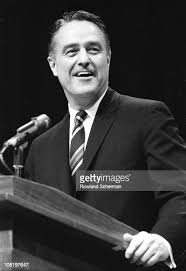 I photographed the staff at work, Sargent Shriver on Capitol Hill asking the Congress for funding, the volunteers in training, and whatever else was needed when a camera was required. Our film, as I dimly recall, was farmed out to and processed by a generic government photo lab that did a lousy job. When I complained about it, they said, “Well, what do you need?”
I photographed the staff at work, Sargent Shriver on Capitol Hill asking the Congress for funding, the volunteers in training, and whatever else was needed when a camera was required. Our film, as I dimly recall, was farmed out to and processed by a generic government photo lab that did a lousy job. When I complained about it, they said, “Well, what do you need?”
I said, “An enlarger, some trays, the chemicals, and a dark room. I need a darkroom.”
A day or so later, all the gear I had mentioned was sitting outside a little storage closet that had running water. So I built the Peace Corps a darkroom, the second (and the smallest) of maybe ten personal darkrooms I have built over the years.
My victory, at first, seemed a psychic one. I did not, it should be stressed, get the chance to go overseas and see the volunteers in action, which I already knew was what people wanted to see. That came later. I was just back in a crappy little darkroom.”
CODA: The year after that, I was traveling the world with writer Jim Walls, and getting a lot of great stuff of the volunteers.
Richard Sitler who works for the Peace Corps writes about Roland’s contributions to the agency:

Joan Baez and Bob Dylan
How appropriate that the person responsible for making a visual record of the first days of Peace Corps to be someone so talented and creative. JFK and Sargent Shriver both had a knack for finding the best people for the job and letting them do it. Peace Corps was well-represented at the beginning, which is probably one of the reasons it succeeded and is now celebrating its 61th anniversary.
The gallery of photographs by Scherman includes images of iconic figures from the 1960s, from musicians Janis Joplin and Bob Dylan, to public figures Bobby Kennedy and Martin Luther King. Name an iconic person from the 1960s and there is probably a great photo of that person by Scherman.
It is appropriate that Peace Corps was his first major subject. What is more iconic of the 1960s than Peace Corps? Many of those great people in his photographs are no longer with us. The Peace Corps, however, is still going strong. And Rowland Scherman is still taking pictures.
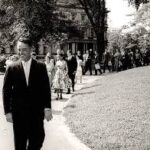
Sargent Shriver, 1st Peace Corps director leading a group of PCVs to the White House

Bobby Kennedy speaking to a group of nuns


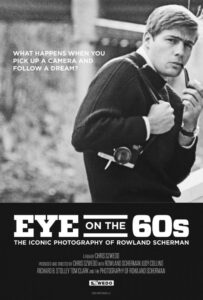
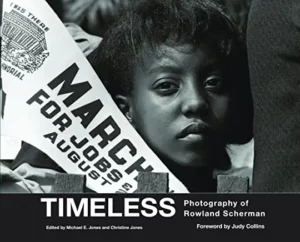
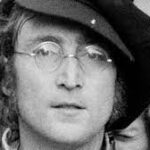

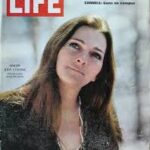
Wonderful to learn about this terrific photographer.
Scherman had, and no doubt still has, the attitude and initiative of the best early Volunteers.
As Linus once said to Charlie Brown, “it’s thrilling to be recognized in one’s own lifetime.”
I’ve heard Rowl’s stories about his early days for decades, and only recently have I–and many others near him–realized the historical impact he’s had.
Proud to call him my brother if he never owned a camera, but the work–I’d be amazed at its depth and scope if I never knew the guy.
I’m sure Tim, he was your ‘little’ brother and you taught him everything he knows. When I met Rowland in ’64 in Ethiopia, he was a kid like all of us and this was, I’m sure, his first trip to Africa. The Peace Corps girls all thought he was great!–maybe it was because of his camera. Years later, I would move to Pelham Manor where you both grew up. I may never be able to get out of his life.
Great uplifting piece! Thanks for sharing!!!